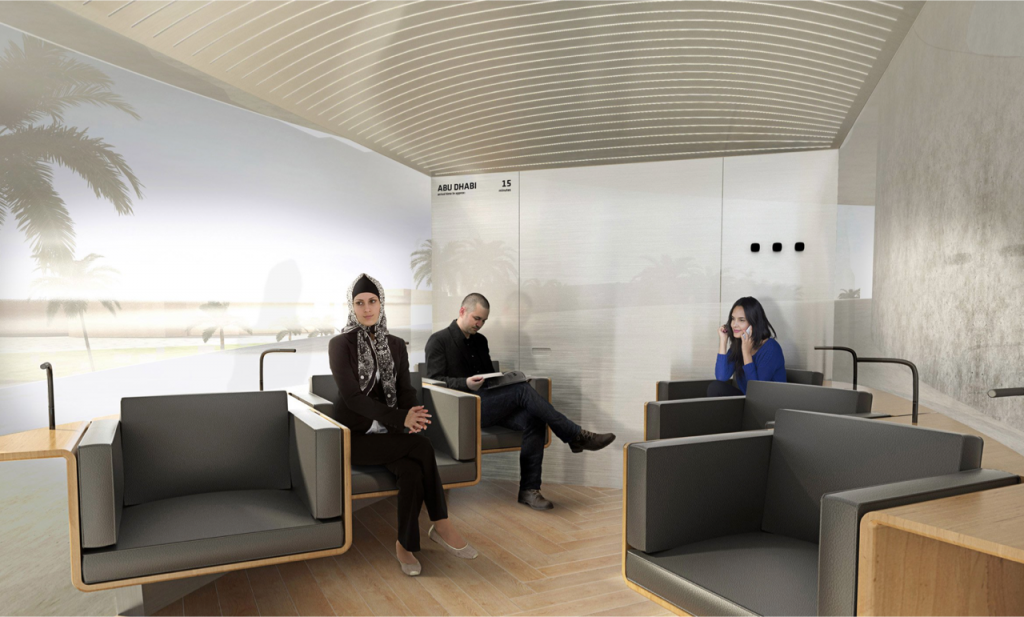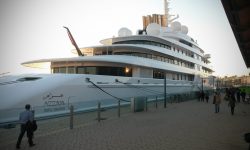Hyperloop interior
Innovative is also the organizing system: the stations are called portals, where people would just board the next available pod instead of ‘stationing’ there, all departure gates are visible upon entering the portal, and a simple numbering system allows passengers to quickly identify them. Pods will move onto a transporter to their final destination, with two tubes that allow for travel in both directions. Most of the time they will be bundled and share the same corridor. Since
transporters always travel directly to their final destination there are no-in-between stops. This makes every stop an endpoint where transporters reverse directions to move to the next destination.
Since the pods are essentially self-driving cars they are able to pick up and drop off passengers outside portals. Pods can be requested via mobile app, a mix between the convenience of Uber and the speed of air travel. These units become the interface for passengers within a portal and work similarly to calling for an elevator using a destination dispatch.
This system clearly seems to be the next logical step in the transportation system, combining the speed of a plane and air-trains, with the capacity of a train and the convenience of a car.
Daria Ricchi
Daria Ricchi is an architectural historian and writer. She is currently visiting fellow at Oxford University, UK.
She has a Ph.D. in history and theory of architecture from Princeton University. She has taught at Princeton University, Yale University, and Parson. The New School, New York.
She published widely in scholarly and non-scholarly magazines (area, casamica- il corriere della sera, Low-Res, Pidgin, Threshold, AA Files).
For More images check next pages.











